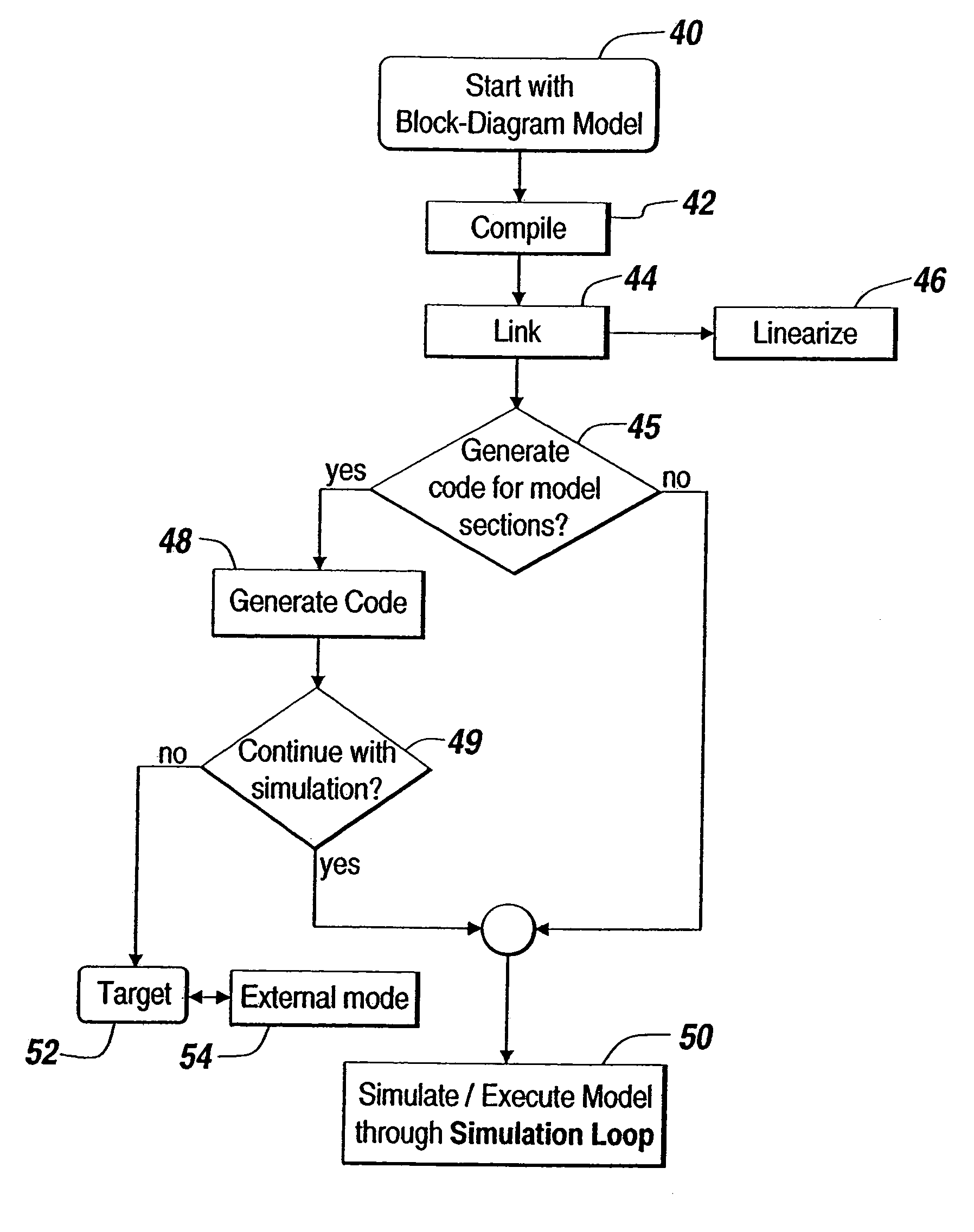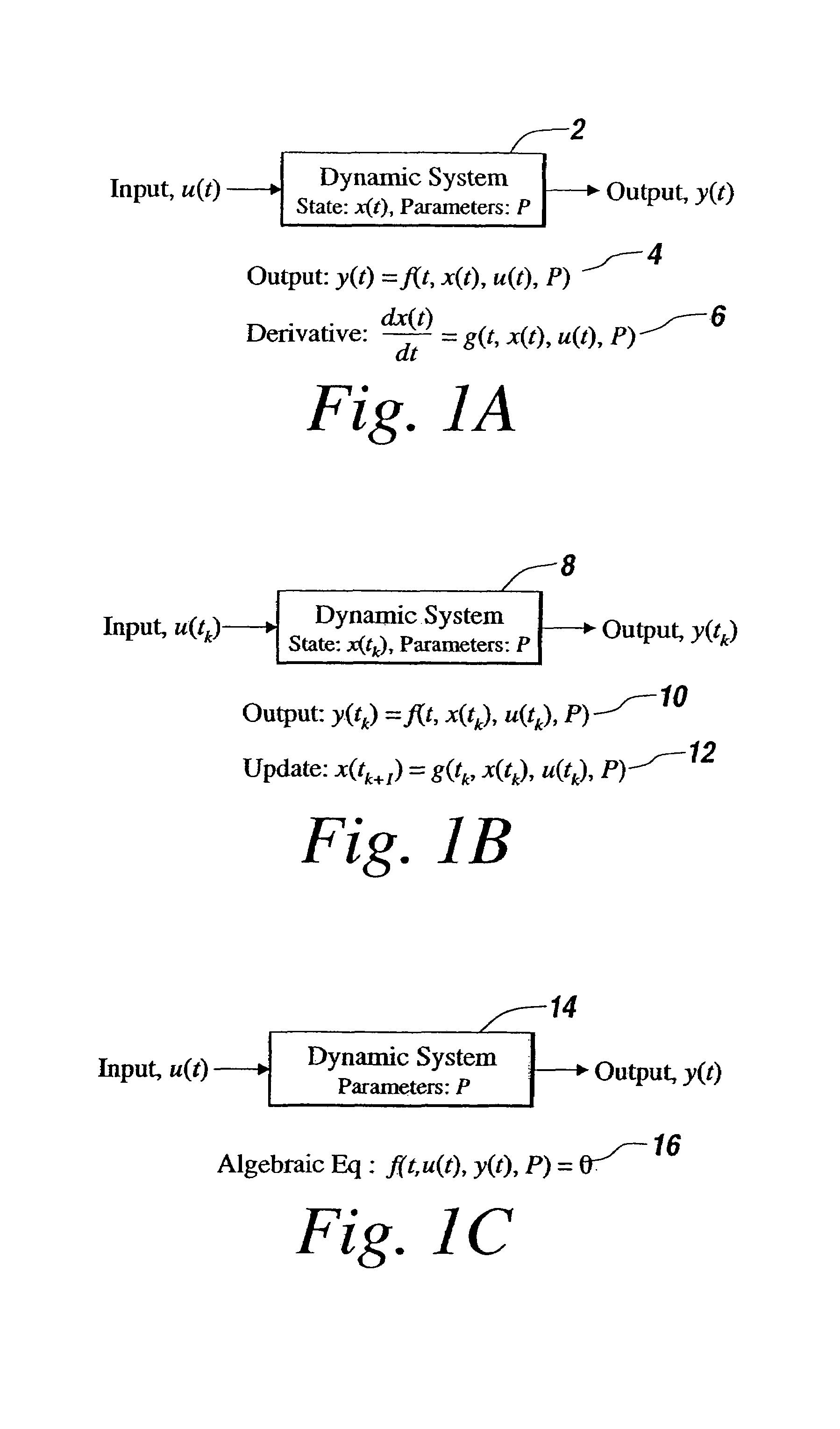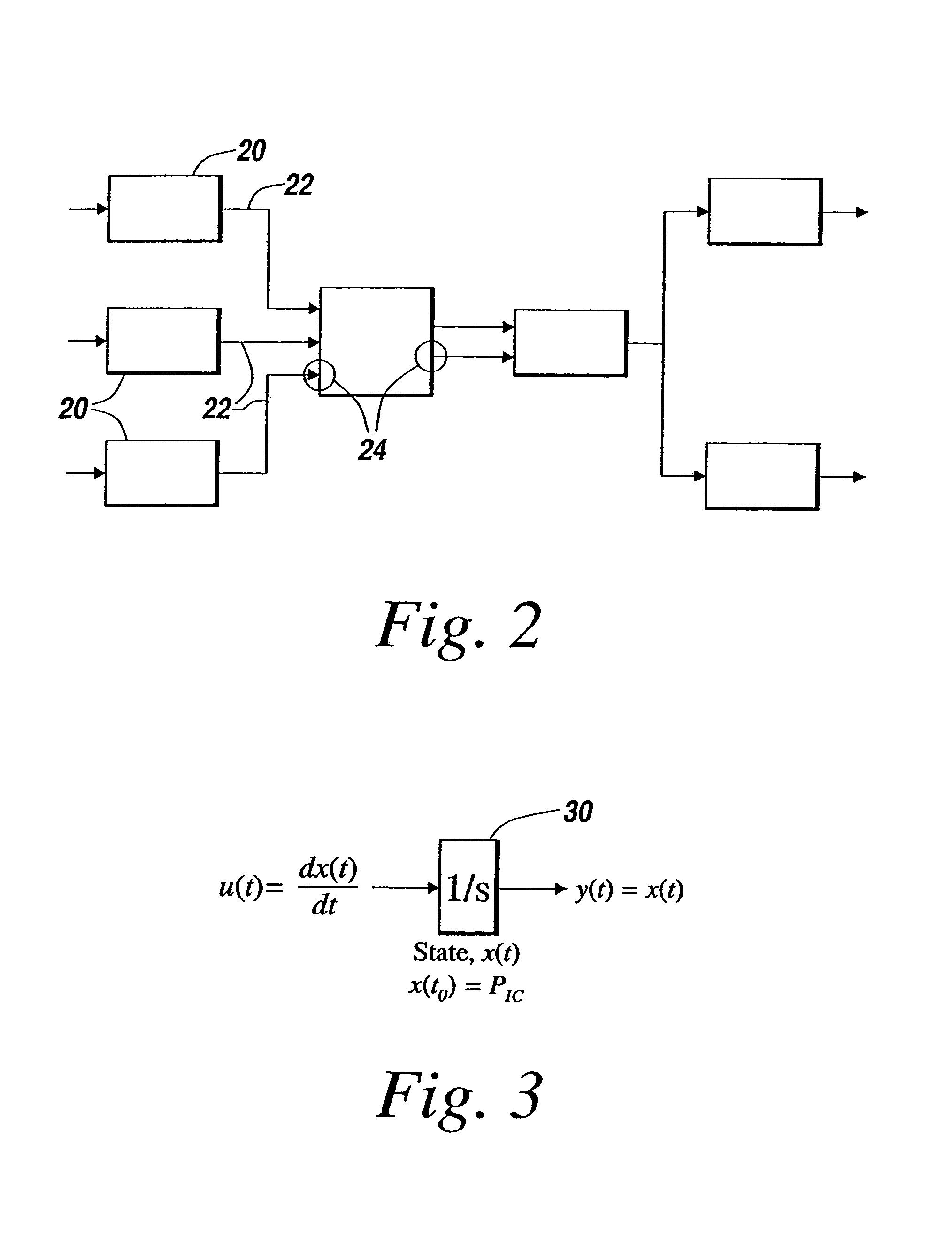Conversion of model components into references
a technology of model components and references, applied in the field of conversion of model components into references, can solve problems such as execution errors, general suitability for describing dynamic system behavior, and disallow the use of blocks
- Summary
- Abstract
- Description
- Claims
- Application Information
AI Technical Summary
Benefits of technology
Problems solved by technology
Method used
Image
Examples
Embodiment Construction
[0198]An illustrative embodiment of the present invention relates to an automated model simplification feature that systematically converts duplicate or otherwise selected patterns in a model into references. The invention enables the use of multiple references to one unit that contains the otherwise duplicated, or selected, functionality. Duplicated functionality is identified based on a number of arguments that may be user supplied. These arguments include the level of polymorphism (e.g., which of the sample times, dimensions, and data types can be propagated in) but also the maximum size of the patterns to look for to address the general trade-off of generating few partitions with many blocks or many partitions with few blocks and which modeling constructs are used (e.g., whether Go To / From connections such as in Simulink® are present). The present invention also facilitates converting the model into potentially disjoint partitions. When changes to the model are made, these chang...
PUM
 Login to View More
Login to View More Abstract
Description
Claims
Application Information
 Login to View More
Login to View More - R&D
- Intellectual Property
- Life Sciences
- Materials
- Tech Scout
- Unparalleled Data Quality
- Higher Quality Content
- 60% Fewer Hallucinations
Browse by: Latest US Patents, China's latest patents, Technical Efficacy Thesaurus, Application Domain, Technology Topic, Popular Technical Reports.
© 2025 PatSnap. All rights reserved.Legal|Privacy policy|Modern Slavery Act Transparency Statement|Sitemap|About US| Contact US: help@patsnap.com



